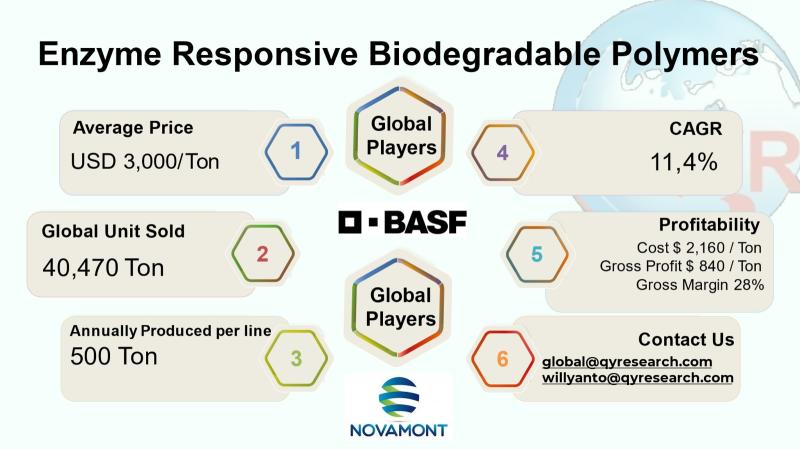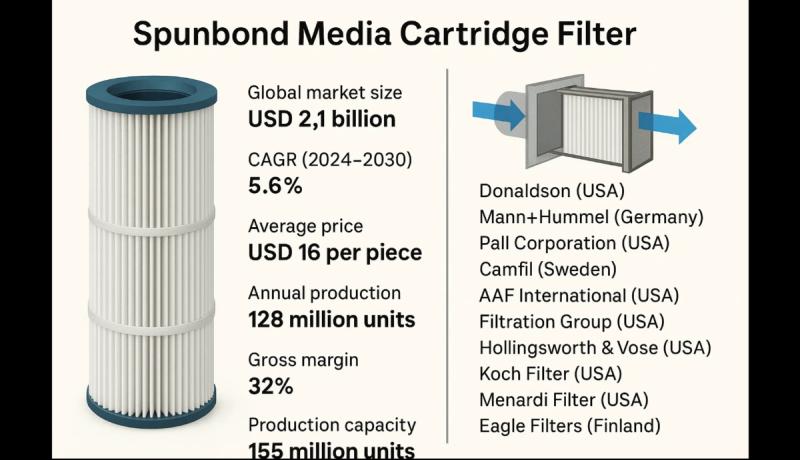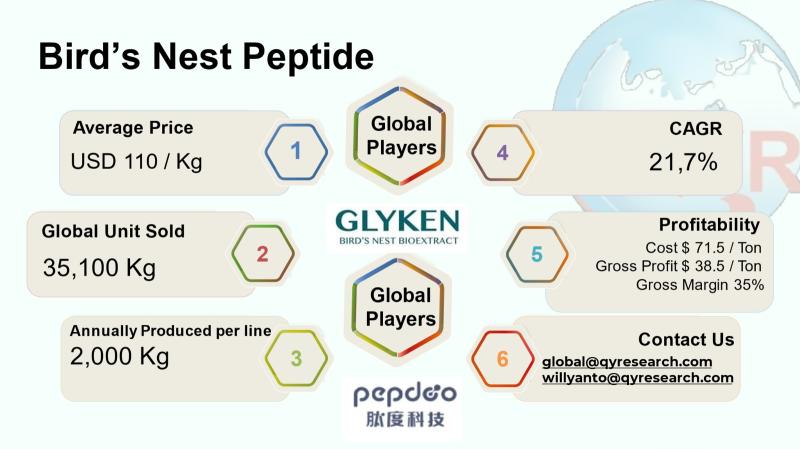Press release
Inside a Market Growing 21.7% Annually: The Technology, Players, and Economics Behind Birds Nest Peptides
The birds nest peptide industry is an emerging niche within the broader edible birds nest (EBN) market, combining traditional health heritage with modern biotechnology. Birds nest peptides are hydrolyzed or nano-sized derivatives of edible swiftlet nests, engineered for higher bioavailability and targeted health benefits. This segment appeals to nutraceutical, cosmetic, and functional food manufacturers who seek to leverage the culturally revered and scientifically promising nature of birds nest in advanced formulations. Birds nest has long been prized in traditional East and Southeast Asian medicine as a tonic, skin elixir, and wellness ingredient. However, the intact glycoproteins in raw nests have low absorption efficiency. The development of birds nest peptides smaller, more bioavailable fragments derived through enzymatic hydrolysis or nano-technology addresses this limitation. These peptides retain many of the purported biological activities (e.g., immune support, anti-aging) but can be more readily used in nutraceuticals, cosmetics, and functional foods.The global 2024 birds nest peptide market size is USD 3.86 million, with a compound annual growth rate of 21.7% through 2031, reaching market size USD 15.27 Million by 2031. With an average selling price of USD 110 per kilogram, the global unit volume sold in 2024 would correspond to roughly 35,100 kg of birds nest peptides. A factory gross margin is at 35% implies to factory gross profit at USD 38,5 per Kg and cost of goods at USD 71,5 per Kg; A COGS breakdown is raw material (swiftlet nest glycoproteins), hydrolysis/enzyme processes, purification/filtration, QC & packaging at and overhead at. A single line full machine capacity production is around 2,000 Kg. Downstream demand is heavily weighted toward nutraceuticals, cosmetics. functional foods & beverages and research/pharmaceutical applications /
Latest Trends and Technological Developments
In recent years, technological innovation has accelerated in the birds nest peptide industry. On June 2024, Pepdoo® announced advancements in its patented nano birds nest peptide powder, achieving significantly enhanced bioavailability and absorption in preliminary human cell studies. Laboratory-scale bioreactors using enzymatic hydrolysis followed by ultrafiltration are becoming more cost-efficient, reducing batch impurities while preserving physiologically active peptide fractions. Moreover, research presented at the International Conference on Multidisciplinary Research for Sustainable Innovation (March 2024) highlighted sustainable sourcing techniques: for example, the conversion of swiftlet house waste (molted feathers, droppings) into nutrient media to support microbial fermentation, indirectly reducing raw nest demand. On the regulatory side, some jurisdictions have begun to evaluate birds nest-derived peptides frameworks, with stricter traceability and purity standards emerging in China, Singapore, and Malaysia.
A prominent South Korean skincare conglomerate, Amorepacific Corporation, regularly purchases highly purified Bird Nest Peptide from the Malaysian biotechnology supplier, NestCell Therapeutics, for incorporation into their premium anti-aging serum lines. The latest procurement contract involved a bulk order of 500 kilograms of pharmaceutical-grade peptide extract, valued at approximately USD 85,000 per kilogram, to meet the formulation demands for their upcoming product launch across Asian markets.
The luxury wellness resort Chiva-Som in Hua Hin, Thailand, integrates Bird Nest Peptide into its signature "Cellular Rejuvenation" treatment program. The peptide is a key active ingredient in their custom-designed facial ampoules and oral supplements provided to guests. For a single, month-long wellness program catering to 50 guests, the resort utilizes an estimated 5 kilograms of the peptide in various formulations, representing a product application value of over hundred thousand dollars for that specific program cycle.
Asia remains the core of the birds nest peptide industry, driven by cultural familiarity, production infrastructure, and rapid adoption of health-forward ingredients. China is by far the largest open market for birds nest derivatives, owing to long-standing traditional medicine use and rising middle-class demand. Edible birds nest consumption in the Asia-Pacific region is substantial: according to market reports, Asia-Pacific accounted for approximately 23% of the global edible birds nest market revenue in 2024. In China, the traceable birds nest sector is growing: according to a Frost & Sullivan analysis, traceable edible birds nest retail sales expanded rapidly between 2017 and 2022, suggesting that consumers are willing to pay a premium for quality and safety. In other Asian markets, including Japan and South Korea, demand is emerging more slowly but is being fueled by premium wellness positioning and cross-border e-commerce.
Get Full PDF Sample Copy of Report: (Including Full TOC, List of Tables & Figures, Chart)
https://www.qyresearch.com/sample/5489944
Birds Nest Peptide by Type:
Small Molecule Peptides
Medium Molecule Peptides
Large Molecule Peptides
Birds Nest Peptide by Product Category:
70%
80%
90%
≥98%
Others
Bird's Nest Peptide by Material:
Pure Bird Nest Peptide Hydrolydsate
Bird Nest Peptide + Collagen Blends
Bird Nest Peptide + Hyaluronic Acid Blends
Enzymatically Hydrolyzed Bird Nest Peptides
Others
Bird's Nest Peptide by Features:
Anti Aging
Immune Boosting Peptide Functionality
Rapid Absorption Nano Peptide Technology
High Protein Concentration
Others
Birds Nest Peptide by Shape:
Powdered Peptides
Liquid Concentrates
Capsules / Tablet
Ampoules / Serum Vials
Others
Birds Nest Peptide by Application:
Pharmaceuticals
Health Products
Food and Beverages
Others
Global Top 10 Key Companies in the Bird's Nest Peptide Market
Glyken
Creative Enzymes
CD Formulation
SEMNL
Caiwei Biotechnology
Hengmei Times
Reborn Biotech
Yanzhichu Group
Fengtai Biotechnology
Huge Collagen II Biotechnology
Regional Insights
Within Southeast Asia (ASEAN), Indonesia plays a uniquely pivotal role. Indonesia is the worlds largest producer of swiftlet nests, with over 70% of global production, primarily concentrated in islands such as Sumatra, Java, and Kalimantan. The Indonesian edible birds nest export research report (20252034) notes that the majority of raw nests are exported, but an increasing number of Indonesian firms are investing in downstream processing capacity including peptide production to capture more value domestically. In countries such as Malaysia, Thailand, and Vietnam, local swiftlet farming and peptide extraction are also beginning to scale. Vietnam, for example, exported over USD 8 million worth of edible birds nest in 2024, supported by government push and rising quality standards. The ASEAN market for birds nest peptides is primarily driven by domestic supplement and beauty segments, leveraging regional consumer trust in traditional health ingredients.
Despite its promise, the birds nest peptide industry faces several headwinds. First, raw material risk is significant: swiftlet nest production is subject to environmental, regulatory, and ethical pressures. Over-harvesting, disease, and habitat disruption can threaten supply. Second, quality and authenticity remain a concern: counterfeit nests and adulterated products are common in the broader edible birds nest market. Third, regulatory clarity is lacking in many markets: while some countries treat peptides as vitamin, others may consider them novel foods or even pharmaceutical ingredients, raising uncertainty around compliance. Fourth, cost pressures are non-trivial: enzymatic hydrolysis, purification, and nano-sizing require specialized equipment and skilled labor, which elevate capital and operational expenditures. Finally, consumer education is still nascent: while traditional birds nest users may appreciate intact nests, awareness of peptide benefits remains limited outside niche wellness circles.
For companies looking to establish or expand in this space, several strategic moves are advisable. Vertical integration can be a powerful lever: firms that control swiftlet farming (especially in major producing countries like Indonesia) and peptide processing can optimize quality and margins. Investing in traceability and certification (e.g., traceable origin, GMP, purity assays) will enhance trust with global OEM customers in nutraceuticals and cosmetics. Partnerships with academic or biotech institutions can accelerate innovation in peptide extraction, fractionation, and formulation. Given the rapid CAGR (~21.7%) projected in this niche, early entrants may secure advantageous positions by building production capacity before the market saturates. Lastly, focusing on high-value downstream channels such as anti-aging cosmetics or premium nutraceuticals may yield better returns than commoditized formats, particularly in Western and emerging health markets.
Product Models
Birds nest peptides are categorized based on molecular weight into small, medium, and large peptide groups. Each category differs in bioavailability, functional activity, and suitability for specific product formulations.
Small molecule peptides (generally 3,000 Da) retain more structural complexity and are often used for targeted biological effects or premium skincare formulations. Notable products include:
Birds Nest Hydro-Rich Lifting Serum Bloomage Biotech: High-molecular-weight peptide serum providing firming and deep hydration.
GoldenNest Ultra Peptide Repair Serum Golden Nest Inc.: Thick serum offering intense hydration and skin repair from high-molecular peptide chains.
HighNest Structural Peptide Mask Proya: Rich hydrogel mask infused with high-molecular peptides to restore elasticity and plumpness.
MegaNest Rejuvenating Essence Chando: Essence that leverages large peptide fractions to reinforce skin structure and radiance.
The global birds nest peptide market represents a promising convergence between tradition and biotechnology. With a 2024 market size of USD 3.86 million and a projected CAGR of 21.7% through 2031, the industry is poised for rapid growth. Asia, and particularly Southeast Asia, remains central both as a source of raw material and as a consumption region. Technological developments in nano-sizing and enzymatic hydrolysis are enabling more efficient and bioavailable peptide products. Yet, the industry also faces significant challenges, including raw-material risk, regulatory ambiguity, and quality control issues. Strategic investment, vertical integration, and innovation will be key to capturing value in downstream formulations.
Investor Analysis
From an investors perspective, this report highlights several compelling themes. First, the high projected CAGR (21.7%) signals substantial growth potential in a niche but underserved market. Second, the vertical integration opportunity (from swiftlet farming to peptide processing) offers a path to build competitive moats, control quality, and maximize margins. Third, the technology innovation in peptide extraction and nano-formulation reduces barriers to entry for high-margin downstream products; investors can target firms that are early in adopting these technologies. Fourth, geographic leverage in Asia, especially in Indonesia (the largest producer) and in consumer markets like China and Southeast Asia, provides scale and growth resilience. Finally, consumer trends toward wellness, anti-aging, and functional nutrition mean that birds nest peptides may penetrate high-value end markets (e.g., cosmetics, nutraceuticals) rather than being confined to traditional edible birds nest formats.
Request for Pre-Order Enquiry On This Report
https://www.qyresearch.com/customize/5489944
5 Reasons to Buy This Report
To understand the current market size and growth trajectory to 2031 of the birds nest peptide segment.
To gain insight into cost structure, including cost of goods sold, factory margins and breakdown of production costs.
To evaluate regional opportunities, especially in Asia and ASEAN (Indonesia, Vietnam, Malaysia) where raw material production and demand converge.
To identify key trends and technological developments, including nano peptides and process innovations.
To assess the competitive landscape, including potential top industry players and strategic positioning.
5 Key Questions Answered
What is the size of the global birds nest peptide market in 2024, and how fast is it projected to grow to 2031?
What are the economics of production (cost of goods, margin, capacity) for birds nest peptides?
What is the breakdown of demand by application (nutraceuticals, cosmetics, functional foods)?
Which regions (especially in Asia and ASEAN) are most critical for sourcing and demand?
Who are the emerging or potential top players in the birds nest peptide value chain?
Chapter Outline
Chapter 1: Introduces the report scope of the report, executive summary of different market segments (by region, product type, application, etc), including the market size of each market segment, future development potential, and so on. It offers a high-level view of the current state of the market and its likely evolution in the short to mid-term, and long term.
Chapter 2: key insights, key emerging trends, etc.
Chapter 3: Manufacturers competitive analysis, detailed analysis of the product manufacturers competitive landscape, price, sales and revenue market share, latest development plan, merger, and acquisition information, etc.
Chapter 4: Provides profiles of key players, introducing the basic situation of the main companies in the market in detail, including product sales, revenue, price, gross margin, product introduction, recent development, etc.
Chapter 5 & 6: Sales, revenue of the product in regional level and country level. It provides a quantitative analysis of the market size and development potential of each region and its main countries and introduces the market development, future development prospects, market space, and market size of each country in the world.
Chapter 7: Provides the analysis of various market segments by Type, covering the market size and development potential of each market segment, to help readers find the blue ocean market in different market segments.
Chapter 8: Provides the analysis of various market segments by Application, covering the market size and development potential of each market segment, to help readers find the blue ocean market in different downstream markets.
Chapter 9: Analysis of industrial chain, including the upstream and downstream of the industry.
Chapter 10: The main points and conclusions of the report.
Related Report Recommendation
Global Bird's Nest Peptide Market Research Report 2025
https://www.qyresearch.com/reports/5489944/bird-s-nest-peptide
Bird's Nest Peptide - Global Market Share and Ranking, Overall Sales and Demand Forecast 2025-2031
https://www.qyresearch.com/reports/5489943/bird-s-nest-peptide
Global Bird's Nest Peptide Market Outlook, InDepth Analysis & Forecast to 2031
https://www.qyresearch.com/reports/5489940/bird-s-nest-peptide
Global Edible Bird's Nest Market Research Report 2025
https://www.qyresearch.com/reports/4030166/edible-bird-s-nest
Global Instant Bird's Nest Market Research Report 2025
https://www.qyresearch.com/reports/4030165/instant-bird-s-nest
Global Instant Stew Bird's Nest Market Research Report 2025
https://www.qyresearch.com/reports/4400767/instant-stew-bird-s-nest
Global Ready-to-eat Bird's Nest Market Research Report 2025
https://www.qyresearch.com/reports/4400766/ready-to-eat-bird-s-nest
Global Freeze-dried Bird's Nest Market Research Report 2025
https://www.qyresearch.com/reports/4372110/freeze-dried-bird-s-nest
Global Bird's Nest Collagen Drink Market Research Report 2025
https://www.qyresearch.com/reports/4652949/bird-s-nest-collagen-drink
Global Freeze-Dried Instant Bird's Nest Market Research Report 2025
https://www.qyresearch.com/reports/4467224/freeze-dried-instant-bird-s-nest
Contact Information:
Tel: +1 626 2952 442 (US) ; +86-1082945717 (China)
+62 896 3769 3166 (Whatsapp)
Email: willyanto@qyresearch.com; global@qyresearch.com
Website: www.qyresearch.com
About QY Research
QY Research has established close partnerships with over 71,000 global leading players. With more than 20,000 industry experts worldwide, we maintain a strong global network to efficiently gather insights and raw data.
Our 36-step verification system ensures the reliability and quality of our data. With over 2 million reports, we have become the world's largest market report vendor. Our global database spans more than 2,000 sources and covers data from most countries, including import and export details.
We have partners in over 160 countries, providing comprehensive coverage of both sales and research networks. A 90% client return rate and long-term cooperation with key partners demonstrate the high level of service and quality QY Research delivers.
More than 30 IPOs and over 5,000 global media outlets and major corporations have used our data, solidifying QY Research as a global leader in data supply. We are committed to delivering services that exceed both client and societal expectations.
This release was published on openPR.
Permanent link to this press release:
Copy
Please set a link in the press area of your homepage to this press release on openPR. openPR disclaims liability for any content contained in this release.
You can edit or delete your press release Inside a Market Growing 21.7% Annually: The Technology, Players, and Economics Behind Birds Nest Peptides here
News-ID: 4290425 • Views: …
More Releases from QY Research

Unit Economics of Precision: A Deep Dive into the $280,000 Gross Profit of an OL …
The OLED inspection equipment industry supplies the automated optical, X-ray, and metrology systems that display manufacturers, OSATs and panel assembly houses use to detect defects, measure critical dimensions and ensure yield across OLED panel production lines. Equipment ranges from in-line web/surface inspection and AOI (automatic optical inspection) systems for flexible substrates to high-resolution metrology and X-ray review systems for panel and module assembly. The industry sits at the intersection of…

The $121 Million Molecule: Inside The Enzyme Responsive Biodegradable Polymer Ma …
Enzyme-responsive biodegradable polymers are a class of smart, degradable materials engineered to break down or change properties in response to specific enzymatic environments. These materials are increasingly applied where controlled degradation or triggered release is valuable for example in advanced medical devices, targeted drug delivery systems, active/functional packaging, and environmentally friendly single-use applications. The technology blends polymer chemistry with biological recognition (peptides, polysaccharides, enzyme-cleavable linkers), and the development pathway…

Cleaner Water, Lower Costs: How Sargento Foods Solved Chronic Clogging with Spun …
Sargento Foods, a food-processing plant in Wisconsin struggled with frequent clogging and high differential pressure in its process-water filtration system. The existing cellulose-based filters degraded quickly under continuous flow, microbial exposure, and periodic wash cycles. As a result, the plant faced repeated shutdowns, reduced throughput, and rising replacement costs. To address this, the maintenance team upgraded to Spunbond Media Cartridge Filters, which use thermally bonded polypropylene (PP) fibers to form…

How SEMES Tripled Etching Chamber Lifetimes with Ultra-Pure Sintered Alumina Pla …
SEMES, a semiconductor equipment OEM in South Korea faced recurring thermal warping and particle contamination issues with metal heater plates used in plasma etching chambers. Under repeated high-temperature cycles (400-900 °C), the metal plates deformed, shed micro-particles, and caused process instability-leading to wafer defects and costly chamber downtime. To solve this, the company transitioned to Sintered Alumina Plates, high-purity (>99.5%) Al2O3 ceramic substrates produced through isostatic pressing, high-temperature sintering (>1,600…
More Releases for Nest
Natural Nest Announces 4th of July Special on Edible Bird Nest Products
This Fourth of July, Natural Nest is proud to celebrate freedom, health, and natural wellness with a special Independence Day offer! From now through July 4th, customers will receive an exclusive flat 25% discount on all edible bird nest products, automatically applied at checkout.
Whether you're a long-time fan of bird nest health benefits or just discovering the tradition of this superfood, now is the perfect time to nourish your body…
Lucidomes Launched the Star Nest Dome
Emission reduction refers to the green construction of construction projects, reducing energy waste and reducing waste emissions. This is a major measure to implement the scientific concept of development and build a socialist harmonious society. It is an inevitable choice for building a resource-saving and environment-friendly society. It is the only way to promote the adjustment of economic structure and change the growth mode! Only by insisting on economical development,…
Dragon Nest Europe: The Battle Continues
Mare Oblivion - Update brings new zone, farm system and a mighty enemy
Eschborn, 15th May 2013: Players of the Action MMO Dragon Nest Europe now have to face their biggest challenge yet. With the third major patch, publisher eFusion introduces, among other things, the Nest of the Sea Dragon, a farm system and new items.
The birth of an abomination
Fifty long years he was resting, but now he has risen…
Termessos - Unconquerable Eagle’s Nest With Ancient Ruins
Termessos with its well-preserved ruins and monuments is one of the most valuable ancient cities in Turkey.
In the Güllük Dağı National Park, 30 kilometres to the north-west of Antalya, expand the ruins of ancient Termessos, also called Aerie. Former city of brave warriors overgrown with Mediterranean forests hides a lot of historic relics. Termessos is probably the most intriguing and interesting city in Antalya region. Termessos, a picturesque ruin flourishing…
NEST - successful cooperation talks in Romania
The "Network for integrated systems in the telemedicine" (NEST) invited Romanian and German representatives from health sector to multilateral cooperation talks in Romania. Two partnering days combining lectures and dialogues between experts from NEST and from several institutions in Romania was organised by NEST. Main topics included telemedical service concepts for patients with neurological disorders, patient monitoring, homecare and emergency care.
In line with its past cooperation events in Russia NEST…
NEST in India
NEST- "Network for Integrated Systems in Telemedicine" will exhibit its products and developments for the first time in Mumbai at HOSPIMedica from March 14th to 16th 2008. The HOSPIMedica exhibition is the region's most important event for healthcare manufacturers, wholesalers, dealers and distributors. NEST will present its telemedical solutions for a better emergency care, be it on board of an airplane or within inaccessible areas, with less medical care centres.…
